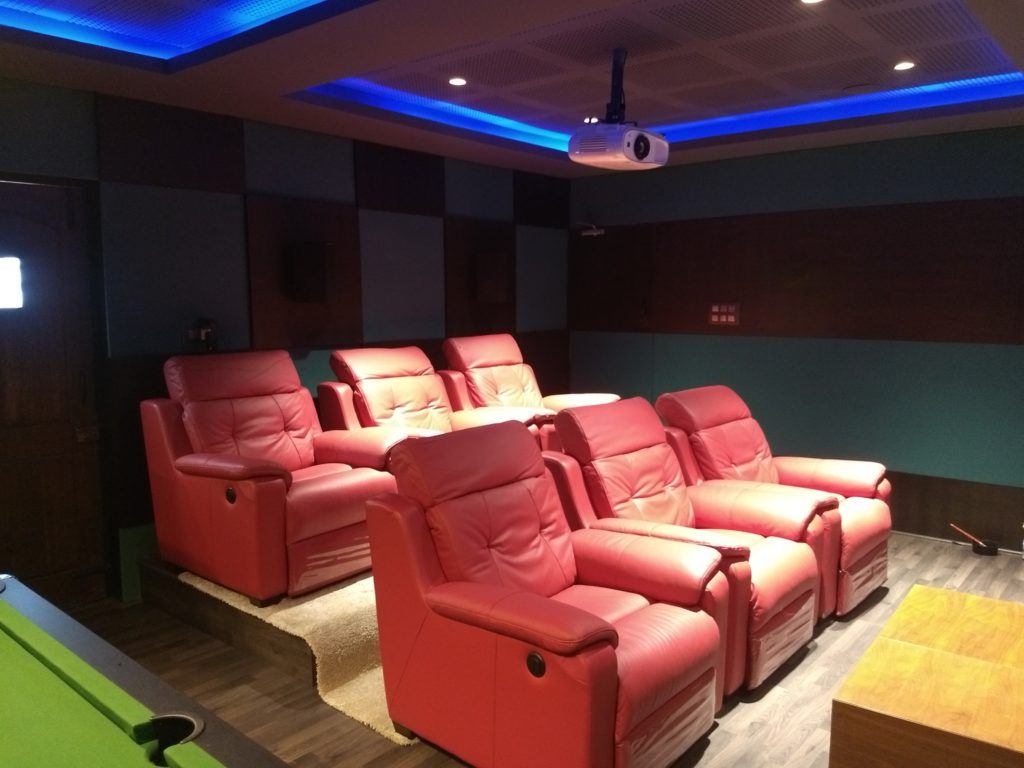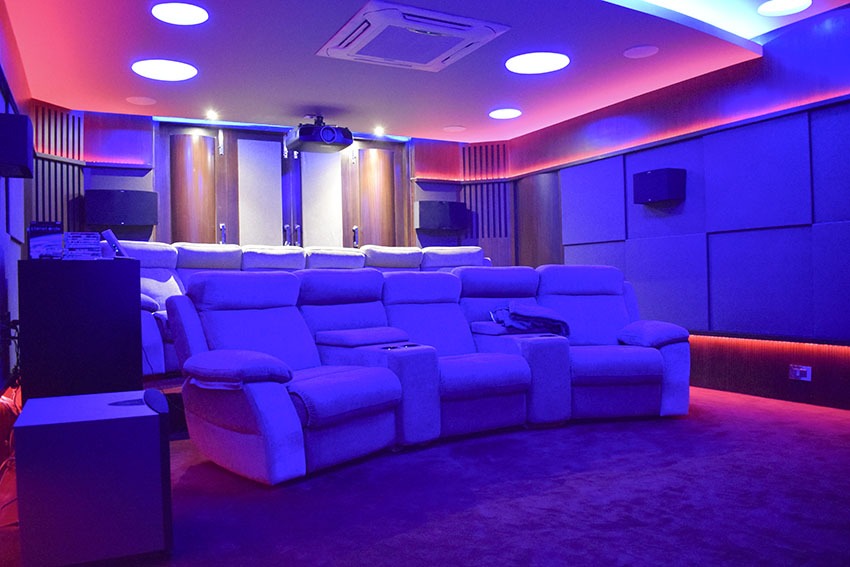Top 7 Do’s and Don’ts for your Home Theater Room Build
Designing and building a perfect home theater room is a pretty challenging task. You have to make many decisions regarding the home cinema room’s structure, materials for the floor, wall, and ceiling, choosing the right speakers, projection system and many more. While making these decisions, you must keep in mind a few dos and don’ts to ensure your home theater room is the best at the specified budget. Let’s look into the 7 common dos and don’ts of home theater installations.
DO’s:
1. Have a decent amount of acoustical panels in your room:
Before installing a high-end home theater system with all your loudspeakers, amplifiers, projector, screen, you need to understand your room’s internal acoustic requirements and accordingly manage absorption and reflection of sound through diffusion panels, bass traps and such other elements. This is very much essential, without which your High-End Home Theater System worth lakhs of rupees will sound like a mediocre system. Reverberation, flutter echoes and uneven bass response in the room will spoil the audio experience and make your music/movies less enjoyable. Bare necessities for home theater acoustics include a carpet rug of 6’x4’ size placed near the front speakers, thick drapes on windows, fabric upholstered sofa. If possible, few professionally designed sound elements with acoustic panel materials will help you achieve magnificent audio.
2. Gain considerable knowledge through online research:
Google today has an answer for anything and everything. Be it about loudspeaker selection, suggested room ratios or screen placement, it knows it all. Having a certain basic understanding of essential home theater concepts before finalising a Home theater installer or a designer carries a greater advantage. You can then comprehend the designer’s thoughts better and develop a better, innovative solution.
3. Make your room multipurpose:
Although this can draw flak from some of you, I believe that every home theater room should have multiple functionalities. As a home cinema owner, you may not do movie watching all the time. You can additionally install gaming stations, a Tata sky console, a karaoke unit or a bar to make the most out of your investment.
4. Make the right investment:
Building the best home theater involves many costs – material, labour and other such services. So before starting on making your home theater, it is necessary for you to understand the various costing involved and be well prepared. If you fall short of funds in the middle of the project, you’ll have to compromise on the quality and alter the original design accordingly. Therefore, underestimating the project budget could lead to last-minute stress.
5. Have enough space for the desired seating arrangement:
Before you come with your own home theater design ideas, the first thing to be kept in mind is to come up with a proper seating arrangement based on the room size. First, decide on the number of people you want to accommodate in the home theater and then make further arrangements for recliners or sofa type seating.

6. Have a proper lighting system:
You may not switch on the lights and watch your favourite movie, but adequate lighting is essential to create the best home theater environment. You could choose either fibre optic lighting or faded lights to give a real theater feel. Additionally, you can install a mobile controlled lighting system to change the intensity of the light to suit the mood.

7. Explore your options before settling:
In today’s Indian home theater market, there are various packages available to build a home theater room. If you’re building your home theater all by yourself, picking such readily assembled systems like Klipsch Audio and Paradigm Speakers seem to save both time and money. However, explore all the other options on the market before choosing any to ensure you are not compromising on the quality.
DONT’S:
1. Do not place the home theater components haphazardly:
Every speaker, light, screen and seating have to be placed in the right place to get the best viewing and listening experience. You should always have the seats at the sweet spot. The high-end home theater systems should always be placed at a certain distance to get the best acoustical output. The screen should not be placed too close so that you have to look up and strain your eyes or neck while viewing.
2. Do not provide too many openings:
Providing too many openings, i.e. door, windows in the home theater room will deteriorate the projected image quality even after covering the openings with an end to end curtain or similar solutions. Allowing the Sun to peek in will lead to terrible distraction and may spoil your music listening sessions.
3. Do not allow too many people to operate your system:
Although easy to maintain and use, the high-end home theatre has many complex gadgets and costs involved. Mishandling or children physically fiddling with it is never a good thing. One person with basic knowledge of remote operation and home theater technologies should take care of the operations.
4. Avoid playing pirated discs:
When you design and build a high-end home theater worth 15 Lakhs, playing pirated discs is like driving a Jaguar F pace on a poorly built mud road. It degrades the audio and video quality and spoils all the fun.
5. Do not neglect proper electricity:
Having an uninterrupted electric power supply is essential for every home theater room construction. Your home theater AV receiver, projection equipment and other components will need constant voltage and power. If not all, at least run the projector through an Online Sine wave UPS. It is also essential to separate the Audio-Video system using MCB from the rest of the components.
6. Do not cover your speakers:
Few home cinema owners are concerned about their speakers being visible in the home theater design and prefer to cover them with fabric or leather. This will significantly deteriorate the entire range of audio frequencies, especially the high frequencies.
7. Do not hesitate to seek help:
If you are trying to design a home theater room all by yourself with some plug and play configurations, you will face many challenges. Even a tiny wrong connection could potentially burn the entire home theater installation. So when in doubt, always consult a Home theater design professional to guide you.




